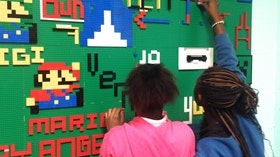Homepage
•
Learning Library
•
Blog
•
What happens when kids make their own makerspace?
Expand breadcrumbs
Expand breadcrumbs
- Learning Library
- Blog
- What happens when kids make their own makerspace?
- Homepage
- •
- Learning Library
- •
- Blog
- •
- What happens when kids make their own makerspace?
What happens when kids make their own makerspace?
By Nicole Krueger
January 31, 2017








